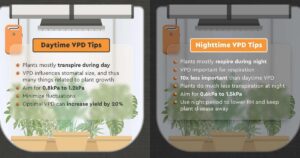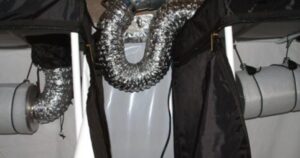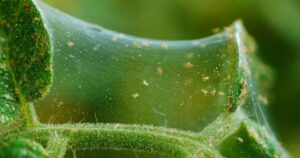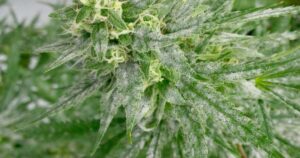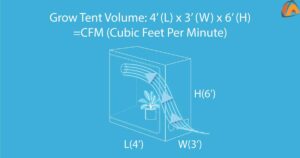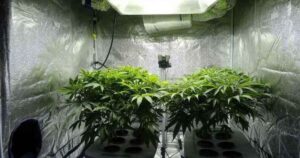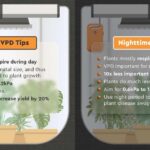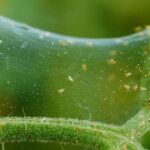Building your own grow tent refers to the process of creating a customized space for cultivating plants indoors. A grow tent is essentially a controlled environment that allows individuals to manage various factors such as light, humidity, and temperature to optimize plant growth.
How To Build Your Own Grow Tent? Embark on a journey of plant cultivation with a personalized touch by learning the art of constructing your own grow tent. Discover the satisfaction of creating a dedicated space for your plants, tailored to their unique requirements.
Your Own Grow Tent offers a versatile solution for indoor gardening enthusiasts. In this article, we’ll provide concise and practical guidance on how to build your own grow tent, covering essential aspects such as materials needed, step-by-step construction process, and tips for optimal plant care. Unlock the potential of your indoor gardening journey and create a thriving haven for your beloved plants.
Selecting the Right Materials for Your DIY Grow Tent
Embarking on the journey of cultivating your own cheap grow tent is an exciting endeavor, but the key to a flourishing DIY grow tent lies in the meticulous selection of materials. Crafting a space conducive to plant growth requires a thoughtful balance of durability, reflectivity, and insulation. To guide you through this horticultural adventure, consider the following key points:
Frame Stability: Choose materials that provide a sturdy framework for your grow tent, ensuring longevity and structural integrity.
Reflective Interior: Opt for reflective materials to maximize light distribution within the tent, fostering optimal conditions for photosynthesis.
Insulation Efficiency: Select materials that offer insulation against temperature fluctuations, safeguarding your plants from adverse environmental conditions.
Ventilation Compatibility: Ensure the materials allow for proper ventilation to regulate humidity and maintain a fresh, oxygen-rich atmosphere.
Lightproof Design: Prevent light leaks by using lightproof materials, maintaining a consistent light cycle crucial for plant development.
In your pursuit of the perfect DIY grow tent, a well-informed selection of materials sets the stage for a thriving indoor garden. Consider these key factors as you assemble the elements that will nurture your plants from seedlings to a bountiful harvest. Happy growing!
Constructing a Sturdy Frame for Optimal Plant Support

In the lush tapestry of gardening, the foundation of a thriving oasis lies in the art of constructing a sturdy frame for optimal plant support. Imagine a symphony of colors and fragrances, a botanical haven where every plant stands tall and proud, reaching for the sun in a harmonious dance.
To achieve this verdant utopia, the key lies in understanding the delicate balance between form and function. The process of building a robust framework encompasses a meticulous blend of materials, spacing, and anchoring, ensuring that your green companions not only flourish but do so with grace and resilience. Picture a garden where vines elegantly cascade over carefully crafted supports, flowers bloom in a choreographed spectacle, and vegetables proudly display their bounty.
Ensuring Proper Ventilation in Your Homemade Grow Tent
Ventilation is the unsung hero, the backstage maestro that regulates temperature, humidity, and oxygen levels, creating an idyllic atmosphere for your green companions. To demystify this essential act of horticultural care, consider a few key points. First and foremost, invest in a reliable exhaust fan to escort stale air out and welcome in the crisp breath of life.
Strategically placed intake vents act as the lungs of your operation, allowing a constant influx of rejuvenating air. Monitoring this ballet of ventilation ensures a flourishing garden within your DIY sanctuary. In essence, think of it as a nurturing embrace for your botanical wonders, a breath of vitality that transforms your grow tent into a flourishing ecosystem.
Setting Up the Ideal Grow Lights System
From understanding the optimal light spectrum to deciphering lumens and coverage, we unravel the secrets that transform your indoor space into a flourishing oasis. Think of it as the backstage pass to your plants’ concert – where every beam of light plays a crucial role in their grand performance. For a quick reference, here’s a snapshot of key points to illuminate your gardening path:
| Key Points | Description |
|---|---|
| Light Spectrum | Explore the diverse wavelengths of light and how they impact plant growth. |
| Lumens and Intensity | Grasp the importance of light intensity and how it influences photosynthesis. |
| Coverage Area | Learn about the ideal coverage for your grow lights to ensure uniform plant development. |
| Duration and Light Cycles | Delve into the intricacies of light duration and cycles, mimicking natural sunlight for optimal results. |
| Energy-Efficient Solutions | Discover eco-friendly options and tips to ensure your grow lights system is both effective and sustainable. |
As you embark on this enlightening journey, let your plants bask in the radiance of a meticulously crafted grow lights system, bringing forth a harvest that reflects the brilliance of your newfound expertise. Happy gardening!
Waterproofing Your Grow Tent

Unveil the art of shielding your precious plants from moisture-related mishaps, ensuring a flourishing haven for your green companions. Dive into the world of impermeability as we unravel the intricacies of safeguarding your grow tent against the unpredictable forces of water.
To guide you through this essential process, let’s delve into the key points of waterproofing—creating a protective barrier that safeguards your botanical haven. Whether you’re a seasoned cultivator or a budding enthusiast, a waterproofed grow tent sets the stage for a flourishing indoor garden. Let’s embark on this journey to nurture and protect your green oasis.
Sealing Seams: Ensure a watertight seal by meticulously sealing seams and joints.
Quality Materials: Invest in high-quality, waterproof materials for your grow tent to enhance durability.
Floor Protection: Place a waterproof mat or liner on the tent floor to prevent water damage to surfaces.
Ventilation Considerations: Balance waterproofing with adequate ventilation to maintain optimal airflow for plant health.
Regular Inspections: Periodically inspect your grow tent for any signs of wear, tear, or potential water entry points.
Condensation Control: Employ methods to manage condensation, preventing excess moisture buildup within the tent.
Proactive Maintenance: Stay ahead of potential issues by incorporating regular maintenance into your gardening routine.
Customizing the Interior for Maximum Plant Growth
In the flourishing world of indoor gardening, the key to cultivating thriving plants lies in the art of customization. Imagine a green haven within your living space where each leaf dances with vitality, and every bloom radiates vibrant hues.
To guide you on this green odyssey, consider a practical table outlining the essential elements for optimal plant flourishing:
| Key Elements | Description |
|---|---|
| Lighting Solutions | Strategically placed grow lights for various species. |
| Temperature Control | Ensuring a climate that mirrors the plant’s origin. |
| Humidity Management | Fine-tuning moisture levels for specific plant types. |
| Soil Composition | Tailored soil mixes catering to individual preferences. |
| Space Optimization | Maximizing space utilization for diverse plant species. |
This table provides a roadmap for transforming your space into a botanical sanctuary, illustrating the intricate dance between personalized interior adjustments and the flourishing life within. Embrace the green revolution within your four walls, and witness the magic unfold as your customized interior becomes a canvas for nature’s grandeur.
Temperature and Humidity Management in Your DIY Grow Tent
In the intricate dance of cultivating your own grow tent, the unsung heroes are often the temperature and humidity levels within your DIY grow tent. The synergy between temperature and humidity is not just a science; it’s an art, and you hold the brush. Ensuring that your plants bask in the Goldilocks zone – not too hot, not too cold, just right is the secret to a flourishing indoor garden.
FAQs
Should I build my own grow tent?
Building your own grow tent requires specific knowledge and materials; consider pre-made options for efficiency and optimal plant growth.
How much does it cost to set up a grow tent?
Costs vary, but a basic setup can start around $100, while more advanced systems with accessories may range from $500 to $1,000.
Conclusion
Creating your own grow tent is a rewarding and cost-effective way to cultivate plants indoors. By following the steps outlined in guides on “how to build your own grow tent,” individuals can tailor the setup to their specific needs, ensuring optimal conditions for plant growth. Whether for cultivating herbs, vegetables, or specialized plants, DIY grow tents offer a customizable and sustainable solution for indoor gardening enthusiasts. With the right materials and a bit of effort, anyone can enjoy the benefits of a self-made grow tent, fostering a thriving environment for their plants.

